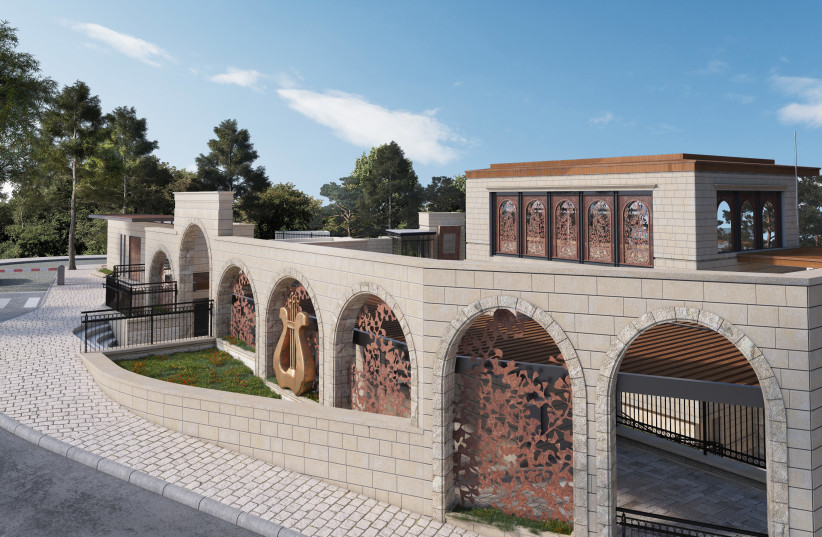A visitor center under construction at the Armon Hanatziv Promenade will use smart technology to allow visitors to optically zoom in to different landmarks of the modern city as well as see a virtual reality view of how the landscape looked thousands of years ago.
<br>A vision of <a href="https://www.jpost.com/archaeology/article-707974" target="_blank" rel="">the past</a>
Envisioned 10 years ago by Russian-born American businessman Eugene Shvidler, a long-time partner of the City of David Foundation, the center will span three floors and combine expansive views of Jerusalem’s Old City and the surrounding hills. It will also feature state-of-the-art experiences meant to connect visitors to more than 3,000 years of the city’s history and its transformation over time.
The project is a collaboration between the Tourism and Jerusalem and Heritage ministries, the Jerusalem Municipality, the City of David Foundation and the Jewish National Fund. It is managed by the Israel Government Tourism Company.
“At the center of this is the acknowledgment that biblical Jerusalem is connected to four billion people all over the world including Christians, Jews and Muslims,” said City of David vice president Doron Spielman. “We are going back in time to the origins of Jerusalem starting with Abraham, going all the way through history to the modern-day where people can see the churches on the Mount of Olives, the Dome of the Rock and the Western Wall.”
“This is going to really enable people to understand biblical Jerusalem in all its beauty. The technology is unbelievable.”
Doron Spielman, City of David’s vice president
<br>4D virtual ride
The second floor of the center will feature “4D” technology that will take visitors on a virtual ride through key moments in Jerusalem’s history. The ground floor will include a restaurant, gift shop and tourist information services. The country’s longest zip line will take off from the ground floor and ride across the landscape to land at the Peace Forest.

“The center stands on the only bird’s-eye view of all Jerusalem and it is the only tourism center in probably the most important overlook of Israel in the most important city,” said Spielman, noting that previously it has been difficult for visitors to the promenade to decipher what they were looking at. “This is going to really enable people to understand biblical Jerusalem in all its beauty. The technology is unbelievable.”
Except for the launching point, the zip line will run under the promenade and will not be visible, he said. Aware of the sensitivity involved in such projects, Spielman said the zip line is a way to open up the history of the site to young people.
“It is a challenge and we are incredibly sensitive to this,” he said. “On the one hand, there is the view you can’t disturb, and at the same time you want people to experience the view. We really want young people to come see this view and the zip line is what is going to bring them. We are learning through the City of David that if you want people 10-25 years old [to come], you need to have a draw, and through that draw they learn about history.”
Three well-preserved royal stone capitals from the Judean Kingdom period were discovered at the site during Antiquity Authority rescue excavations before the construction of the center began in 2020. Dated by archaeologists to the reigns of King Hezekiah and King Josiah, during the restoration of Jerusalem after the Assyrian siege of 701 BCE, the capitals are thought to have been part of a monumental residential structure. Residents would have enjoyed the same panoramic view, said Spielman.
“The potential of this location was discovered by the royalty and nobility of Jerusalem who lived in this structure 2,600 years ago,” he said.
Slated to be completed sometime next year, the new visitor center is expected to draw about a quarter million tourists a year.
